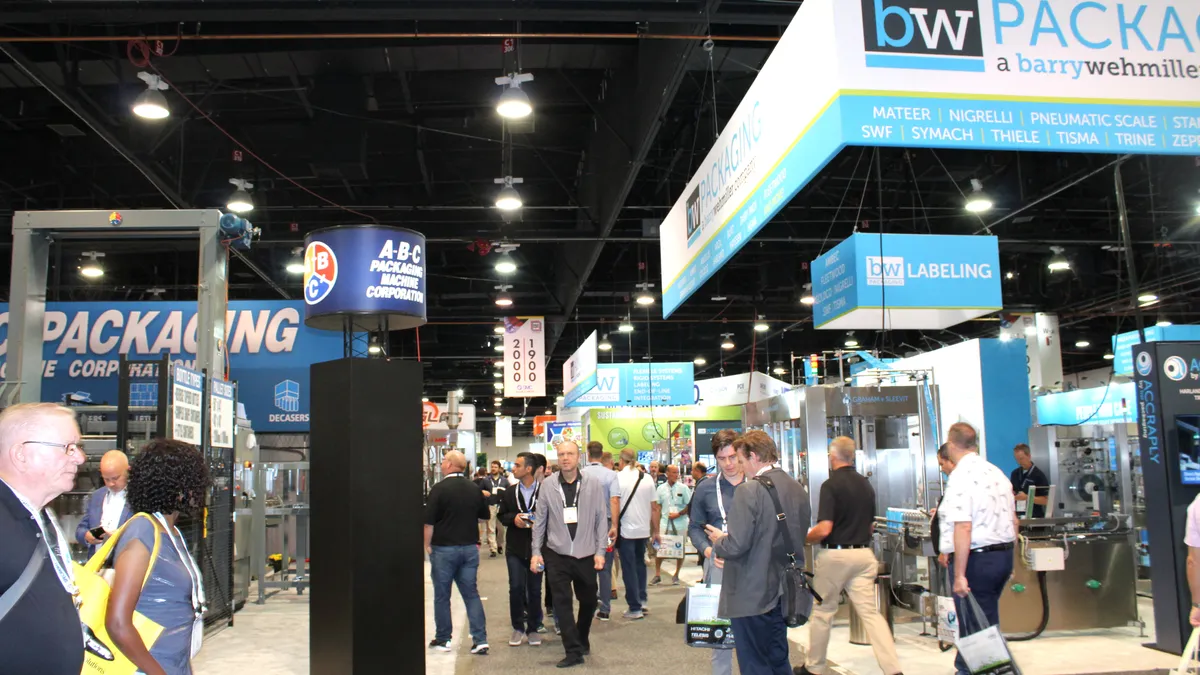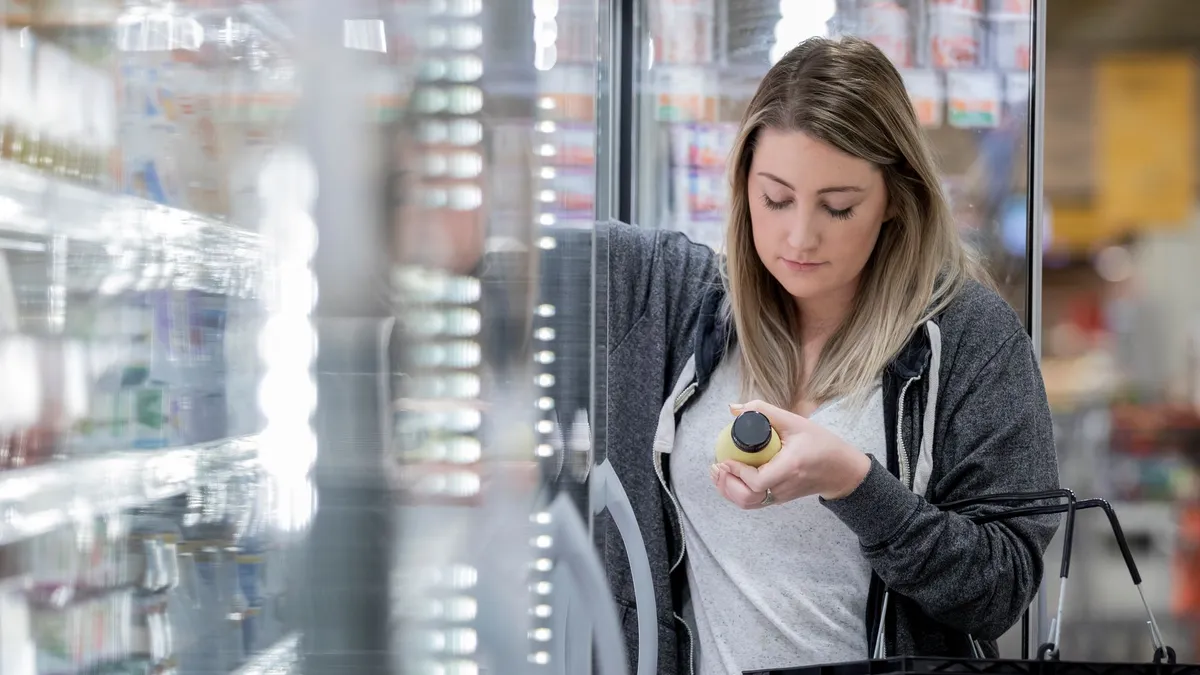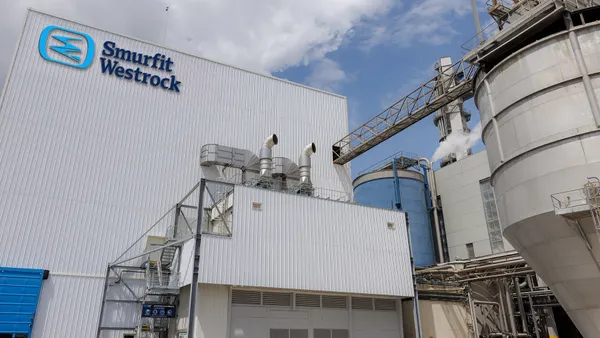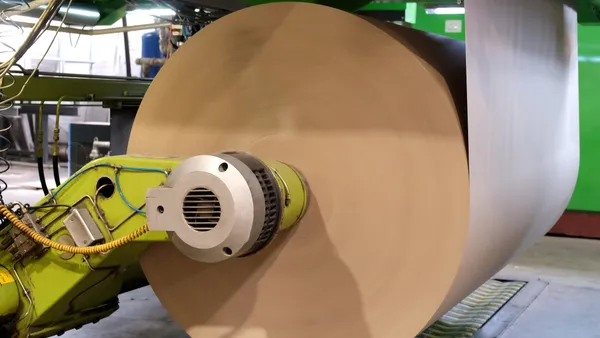A swift glance at the exhibition halls and attendees at Pack Expo 2023 might indicate a steadfast and stable industry to a casual visitor. But speakers at the event suggested a slightly different scenario: The dynamic industry is “renormalizing” after a state of upheaval for the past three-plus years.
Supply chain ups and downs during the pandemic appear to be leveling out, experts said. But other factors like environmental consciousness are driving a whole new wave of change and innovation, both in packaging manufacturing operations and product development.
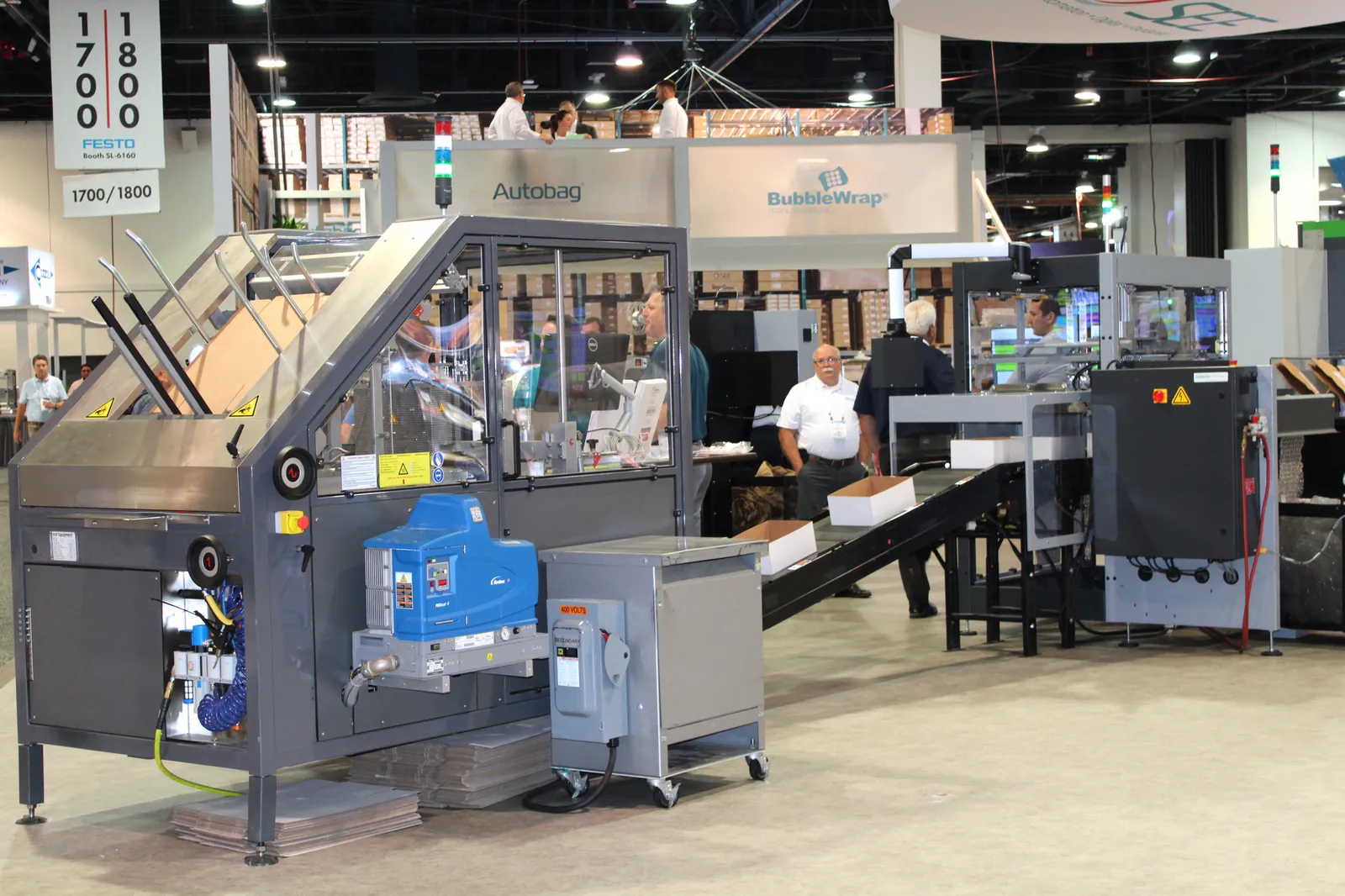
Graphic Packaging International, International Paper, SEE and WestRock were among the more than 2,000 exhibitors and 30,000 attendees who packed three halls at the Las Vegas Convention Center during the three-day event. Company representatives and association leaders held educational sessions addressing the state of the packaging industry, including top solutions and emerging opportunities.
Riding a rollercoaster
During a media event, representatives from sponsor PMMI (The Association for Packaging and Processing Technologies) zeroed in on current packaging trends and challenges while diving into the organization’s most recent state of the industry report.
The first half of 2020 brought a slowdown in sales, but the second half of that year showed growth that stretched well into the next year, according to Jorge Izquierdo, vice president of market development for PMMI. In fact, 2021 showed record growth of nearly 16%, driven by changing consumer habits during the pandemic. In 2022, packaging experienced it’s second-highest annual growth rate at 12.4%, he said, adding that “we thought demand for packaging was going to drop, but that didn’t happen.”
This year a downward shift has occurred. “Certainly, it’s not a double-digit growth year as it was [in] 2021 and 2022 ... but it’s not a negative year, either,” Izquierdo said. “We’re expecting to see growth of 3.5% to 4%.”
Much of the change comes from volumes renormalizing in the post-pandemic environment, but also as destocking lessens following the infamous backlogs resulting from supply chain issues. The record backlogs from 2022 are steadily easing in 2023, Izquierdo said.
The pandemic also caused e-commerce to boom, he said. Many companies began doing direct-to-consumer or B2B selling, and the shift also impacts packaging operations and logistics. Traditionally, packaging machinery has been installed at sites “where manufacturing happens. These days, we are finding significant demand of packaging machinery happening at the warehouse level,” Izquierdo said, citing companies doing fulfillment. Thus, PMMI expects a lot of secondary packaging investment in the next few years, such as with palletizing and shrink-wrapping equipment for e-commerce.
Sustainability is another significant industry trend that has become even more relevant in the past two years, Izquierdo said. “These days, sustainability is very, very important for anybody involved in packaging.” This focus includes attention to replacing existing materials with more sustainable versions.
“We talk a lot about packaging materials and certainly we see how they are evolving,” said Izquierdo, explaining that such changes also mean alterations to equipment. “That packaging line is optimized for that specific material. When you replace a material, the productivity is going to drop. And very likely, to keep that productivity at the same level, you will need to make some alterations to your equipment line.”
Looking into 2024, resilience is the name of the game amid economic uncertainty. The packaging industry “tends to be very robust, very resilient. I wouldn’t want to use the word recession-proof, but certainly very resilient,” Izquierdo said. He projects that the food and beverage sectors will continue to hold major importance, and the pharmaceuticals sector will experience significant growth in the next two years.
At the same event, Pierre Pienaar, president of the World Packaging Organisation, discussed top global packaging trends and challenges. He highlighted sustainability, intelligent packaging and the use of artificial intelligence. He said nanotechnology — material manipulation at the molecular scale — is another emerging area of opportunity, such as by creating monomaterials that are easier to recycle than multi-material packaging.
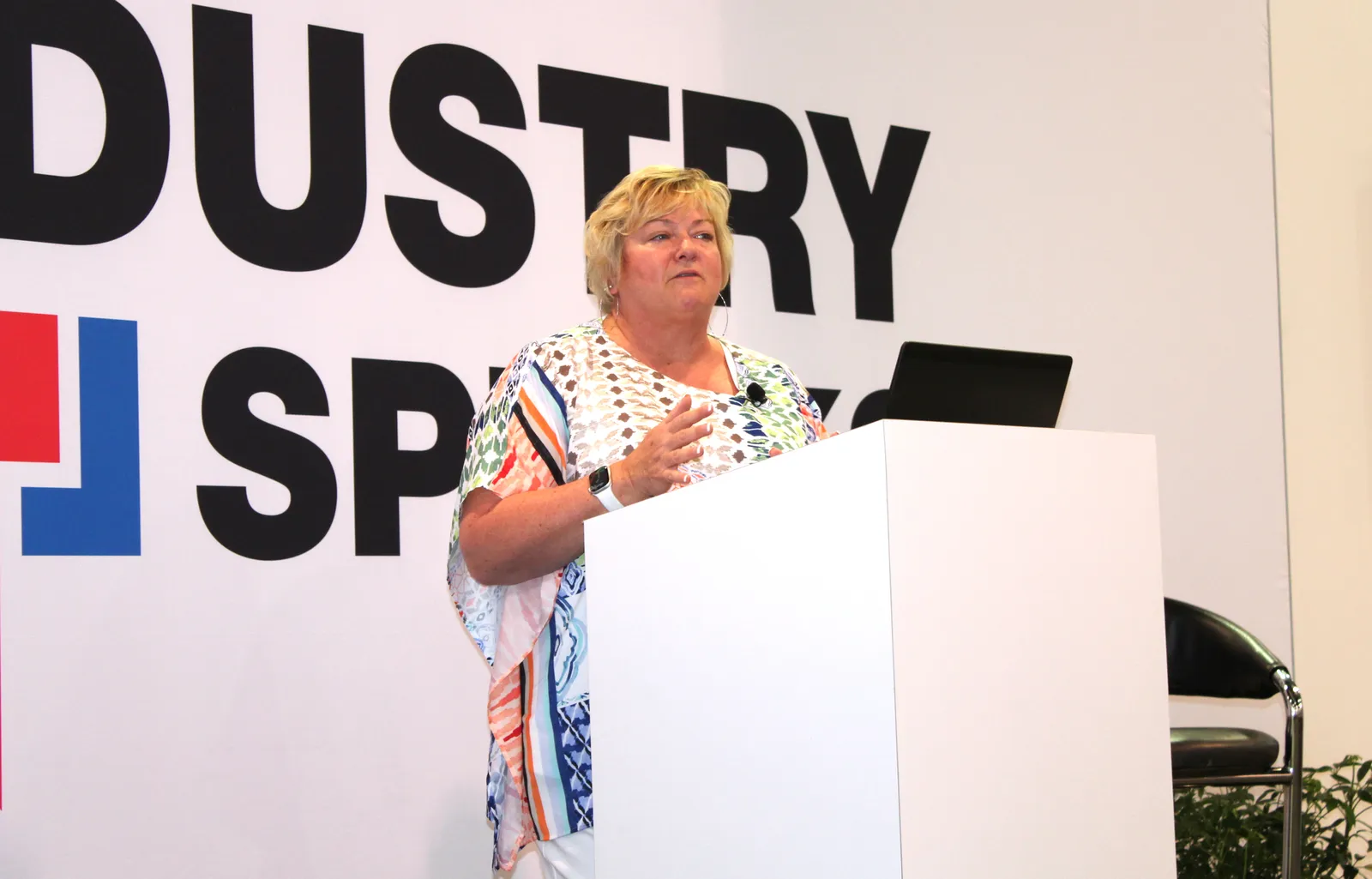
Focus on flexibles
Representatives from niche groups also delved into their own sectors’ most recent data and upcoming reports at educational sessions. Alison Keane, president and CEO at the Flexible Packaging Association, said that total domestic packaging is worth $183 billion, and flexible packaging constitutes nearly 21% of that. That puts flexible packaging just behind corrugated, the leading market with a share of 22%.
Sustainability and the economy are tied as what suppliers report their most important issues to be, Keane explained. However, converters’ most important issue by far is the labor pool, with raw materials (scarcity and price) and sustainability coming in at second and third.
“My tenure is coming up on seven years, [and] for the last five years sustainability has always been in the top three,” she said, noting that although labor and workforce issues currently are top of mind, as they are for most manufacturing sectors, “sustainability is here to stay.”
At times it can seem like a new customer sustainability metric arises just as another is met, “so the whole supply chain kind of goes down and then we have to come back up with the solutions,” Keane said. For example, consumer product companies now request PFAS-free products, whereas that wasn’t previously part of most customers’ criteria.
A key challenge is the lack of adequate infrastructure to collect, sort and process flexible packaging: mainly, a lack of curbside recycling programs that accept flexibles. For example, only 5% of film is collected for recycling, and that’s primarily through store drop-off programs. “That’s not a lot of film or flexibles being collected for recycling,” Keane said, adding that collection needs to improve to meet brands’ recycled content goals.
Another holdback is getting Food and Drug Administration approval for food-contact flexible packaging that contains recycled content. Other challenges include the scarcity of end markets.
“The good news is we have really good partners in figuring this stuff out,” Keane said, referencing converters and recyclers. “We have solutions out there. We need to scale them up.”
Co-packing earns ‘respect’
Representatives from the Association for Contract Packagers and Manufacturers (CPA) also detailed that sector’s annual report. Like other segments, co-packing has been greatly impacted by the pandemic and momentum for sustainability, explained Carl Melville, president of the Melville Group, an industrial marketing agency for contract manufacturers working in food and CPG.
Channeling the late comedian Rodney Dangerfield, Melville contended co-packing used to get “no respect at all,” but it has evolved such that awareness, relevance and value have increased. “Today it is a strategic part” of nearly any brand’s North American operations, he said, and CPG companies primarily rely on co-packing to gain a competitive advantage in areas such as capacity, efficiency, innovation and speed to market.
At a separate educational session, CPA Executive Director Ron Puvak reinforced those reasons for brands using co-packing, saying the sector primarily “has always been about capacity.”
He said that in 2022, the co-packing market was worth more than $100 billion globally, and CPA projects that by 2025 the market will be more than $125 billion. From 2023 to 2028, the sector is projected to experience an 11.3% compound annual growth rate, proving it is “very, very healthy,” Puvak said.
Sustainability is a hot topic for co-packing just as it is for the broader industry, although “‘ESG’ in my opinion has surpassed ‘sustainability’ as the buzzword,” Puvak said.
Brands’ and packaging companies’ work to become more circular also affects the co-packing sector because partners will expect sustainability data, such as emissions reporting for calculating scope 3 emissions. The sector will be a notable part of closing the loop to “create circular supply chains,” Puvak said.



